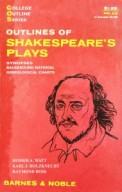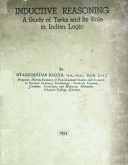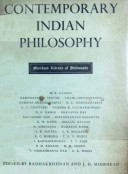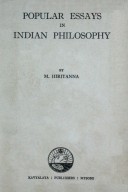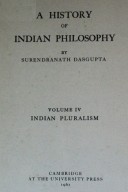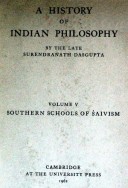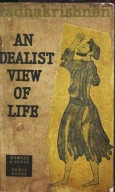Outlines of Shakespear’s Play
BARNES & NOBLE EDUCATIONAL
COLLEGE OUTLINE SERIES
TABLE OF CONTENTS
Introduction
Shakespeare’s Life…………………………………….. 1
Shakespeare’s Theatre……………………………….. 5
The Sequence of Shakespeare’s Plays…………. 12
Shakespeare’s Sources……………………………… 15
Suggestions on Reading Shakespeare…………. 25
Synopses
Comedies:
Love’s Labor’s Lost…………………………. 40
The Comedy of Errors……………………… 43
The Two Gentlemen of Verona…………. 47
A Midsummer Night’s Dream…………… 50
The Merchant of Venice…………………… 54
The Taming of the Shrew…………………. 58
The Merry Wives of Windsor……………. 62
Much Ado About Nothing………………… 66
As You Like It ……………………………….. 70
Twelfth Night: or, What You Will……… 74
All’s Well That; Ends Well……………….. 77
Measure for Measure……………………….. 80
Pericles, Prince of Tyre…………………….. 84
Cymbeline……………………………………… 87
The Winter’s Tale……………………………. 92
The Tempest…………………………………… 96
Histories:
Shakespeare’s History Plays…………… 103
King John ……………………………………. 106
Richard H ……………………………………. 110
Henry IV: Part I…………………………….. 113
Henry IV: Part II …………………………. .117
Henry V……………………………………….. 121
Henry VI: Part I…………………………….. 125
Henry VI: Part II…………………………… 129
Henry VI: Part III…………………………. 133
Richard III……………………………………. 137
Henry VIII………………………………….. 142
Tragedies:
Titus Andronicus…………………………… 148
Romeo and Juliet…………………………… 151
Julius Caesar………………………………… 154
Hamlet, Prince of Denmark…………….. 158
Troilus and Cressida……………………… 162
Othello, the Moor of Venice……………. 166
King Lear……………………………………… 170
Macbeth ………………………………………. 174
Antony and Cleopatra……………………. 178
Timon of Athens…………………………… 183
Conolanus …………………………………… 187
Appendices
Everyday Expressions from Shakespeare….. 190
Book-titles from Shakespeare………………….. 192
Bibliography…………………………………………. 198
An Index of Characters and Places in Shakespeare’s Plays.. 204
Illustrations and Maps
The Theatres of Shakespeare’s London……………………………… 5
New York University Model of a Typical Elizabethan Theatre 6
New York University Model Showing Stage………………………. 8
Interior of the Swan Theatre (from a contemporary drawing).. 9
Ben Jonson’s Verses Printed Opposite the Tide-Page of the First Folio, 1623 36
Tide-Page of the First Folio…………………………………………….. 37
England and Northern France in Shakespeare’s Plays…….. . 102
The London of Shakespeare’s Plays………………………………. 104
FOREWORD
NO PLAY SYNOPSIS, it need hardly be said, can take the place OỈ its original; and this little volume is not presented as a substitute for the dramas themselves. To be appreciated and understood, Shakespeare’s plays must be read carefully in full—not in the dilution of outlines or abridgments. In preparing this book, therefore, the authors had in mind only to provide student and lay reader with a convenient device for reviewing plays previously read, and for acquiring some general facts about Shakespeare’s life and times and some simple suggestions and aids for studying his dramas.
The order of the play synopses in this book is, by type, the traditional one established by the First Folio of 1623: Comedies, Histories, and Tragedies. Within these divisions, however, the non-significant order of tradition has been abandoned in favor of one which seems to the authors to fulfill better the objectives of the volume. In the divisions of Comedies and Tragedies the order is that in which Shakespeare wrote the plays, as these are listed, with dates of composition, on page 14. The Histories have been arranged in the chronological order of the reigns of the kings; by this plan the full significance of the relationship of the plays of the double tetralogy (second to ninth History inclusive) becomes apparent.
The plot or story synopses have all been carefully constructed on very definite principles. In the first place, of course, an attempt has been made to give in each synopsis the story of the play being summarized. No episode or detail essential to a complete understanding of the plot has been omitted, and there are no broken story threads. Omissions have been restricted to scenes and parts of scenes which are in no wise essential to a complete understanding of the development of the narrative from the initial instability of the situation, through the unraveling of the tangled skein of events, to the climax.
In the synopses the division into acts follows scrupulously that of the original play with no transfer whatever of any episode from one act to another. Inasmuch, however, as the division into scenes in Shakespeare’s plays is often of no narrative significance, the order of events in the synopses has frequently been altered within the act from that of the plays. One reason for these alterations is that the synopses might have a continuity of narration and a smoothness of flow which they might not otherwise possess. By careful linking of sentences and acts, by references to events past and sometimes to events to come, and by other compositional devices to secure coherence, an attempt has been made to avoid the libretto-llke effect which appears in synopses made scene by scene.
But In addition to giving a complete and smoothly told story of the play, the authors have tried to reflect in their synopses something of the art of Shakespeare which is analyzed briefly in the section of the introductory material which deals with the reading of the plays. For example, the synopses reveal the dramatist’s skilful use of related parallel plots and of contrasting characters or foils, care having been taken to make these artistic devices readily apparent even in these brief summaries. With this purpose in mind, the authors have even included some subplots or general situations which do not ordinarily appear in similar play outlines, such, for example, as the Fortinbras subplot in Hamlet, which marches with solemn and ominous tread behind the story of the Danish prince and merges with it at the end.
The nature and limitations of a brief synopsis preclude its suggesting much of the flavor of its dramatic original. Wherever possible, however, actual quotations from the play have been woven into the narrative, quoted accurately and with square brackets setting off the non-Shakespearean words and phrases which the structure of the sentence sometimes requires. In selecting these quotations the authors have had in mind both the significance of the passage quoted in explaining action or character and its beauty, vigor, concreteness, adaptability, or familiarity.
In preparing the dramatis persona the authors believe that they have hit upon an original and compendious device for presenting the characters to the reader. Arranging the characters “in the order of their appearance” would mean nothing in such a book as this. Moreover, the old arrangement, followed, apparently without thought of change, from the first editions of the plays to the present time, does not seem to have any especial significance. Nothing out tradition, indeed, justifies the listing of characters, regardless of their relative importance, in the strict order of social rank and with a sharp and curious division between male and female. In the dramatis persona preceding each synopsis here the general plan has been to list the characters in the order of their importance without distinction of social rank or sex. An attempt has been made, furthermore, to place together those characters which represent obvious contrasts or foils, or which are related in some other Important way. Finally, no character, no matter how insignificant, has been named without some Indication of his part in the action; thus the meaningless inclusion of dozens of mere names has been entirely avoided.
Following somewhat the method of modem plays, the authors have described briefly but carefully each major figure in the dramatis persona; furthermore, characters not essential to an understanding of the plot but nevertheless worth knowing for themselves—like the worthy Launcelot Gobbo—have been similarly characterized. All these analyses have been necessarily brief, but the authors believe that this brevity is more than compensated by the fact that as far as possible the descriptive phrases employed have been taken from the plays themselves, which were read carefully with this purpose definitely in mind. Moreover, the characterizations taken from the plays were selected for their general applicability to the characters, and those discolored by rage, hate, or other emotions were excluded. The quotations are accurate with letters, words, and phrases not directly quoted included in square brackets. It is perhaps not too much to say that often a single vivid phrase from the play is worth more as a characterization than pages of flat and wordy “character analysis.”
The introductory material, finally, was designed not to be complete but generally helpful to the average lay reader. Care has been taken to make it scrupulously accurate, but it is not meant to take the place of books on Shakespeare’s life, times, and workmanship. Every section, however, was included because of the authors’ conviction that it contains some information or suggestion which will make the reading of Shakespeare’s plays more understandable and more enjoyable. Nevertheless, this Foreword must end as it began: for the reading of the dramas themselves there is no substitute.
 Facebook
Facebook
 Google
Google
 Google+
Google+
